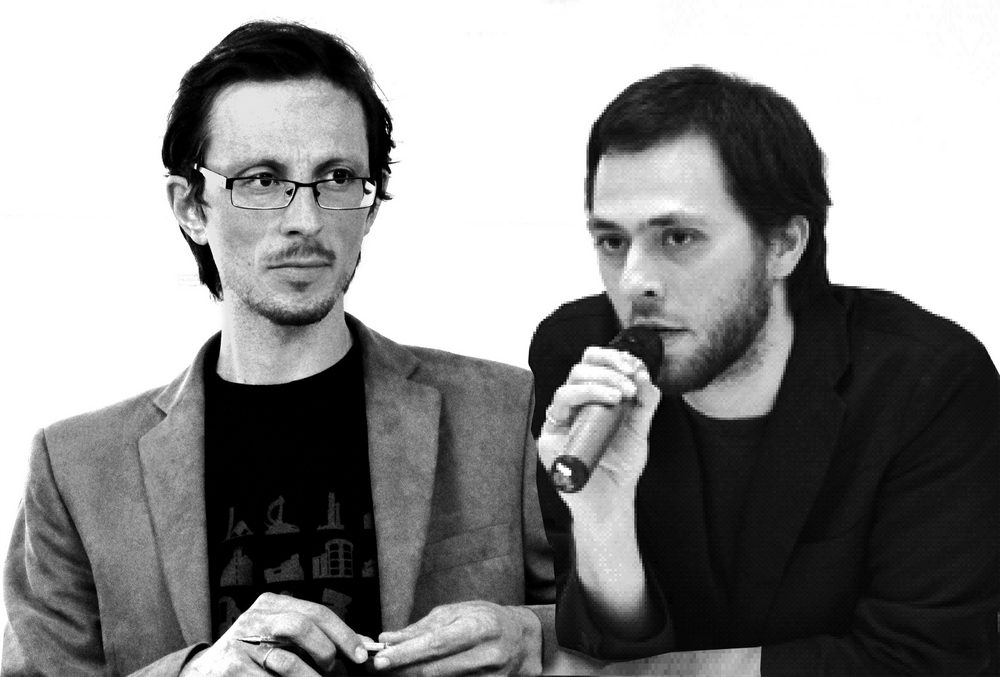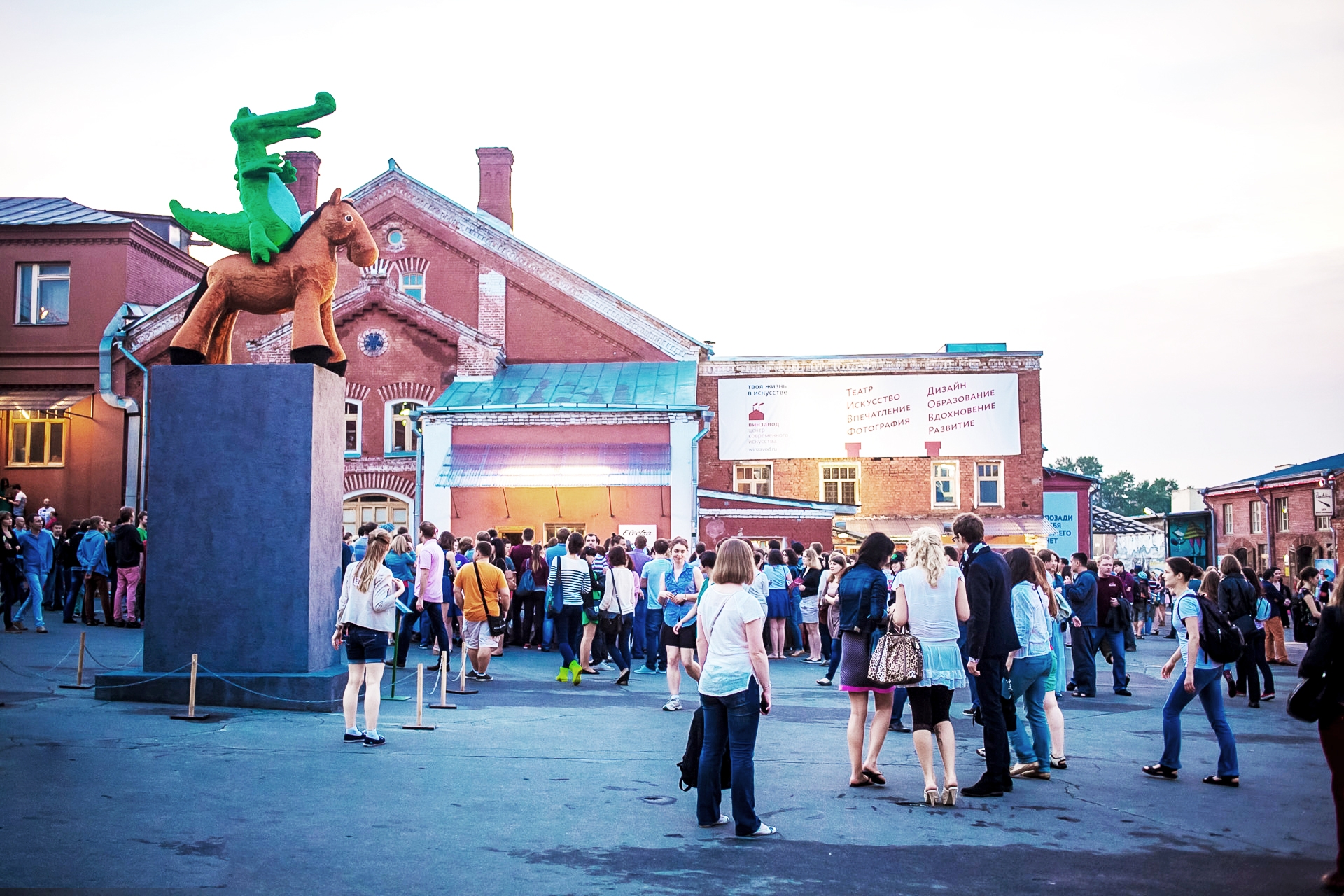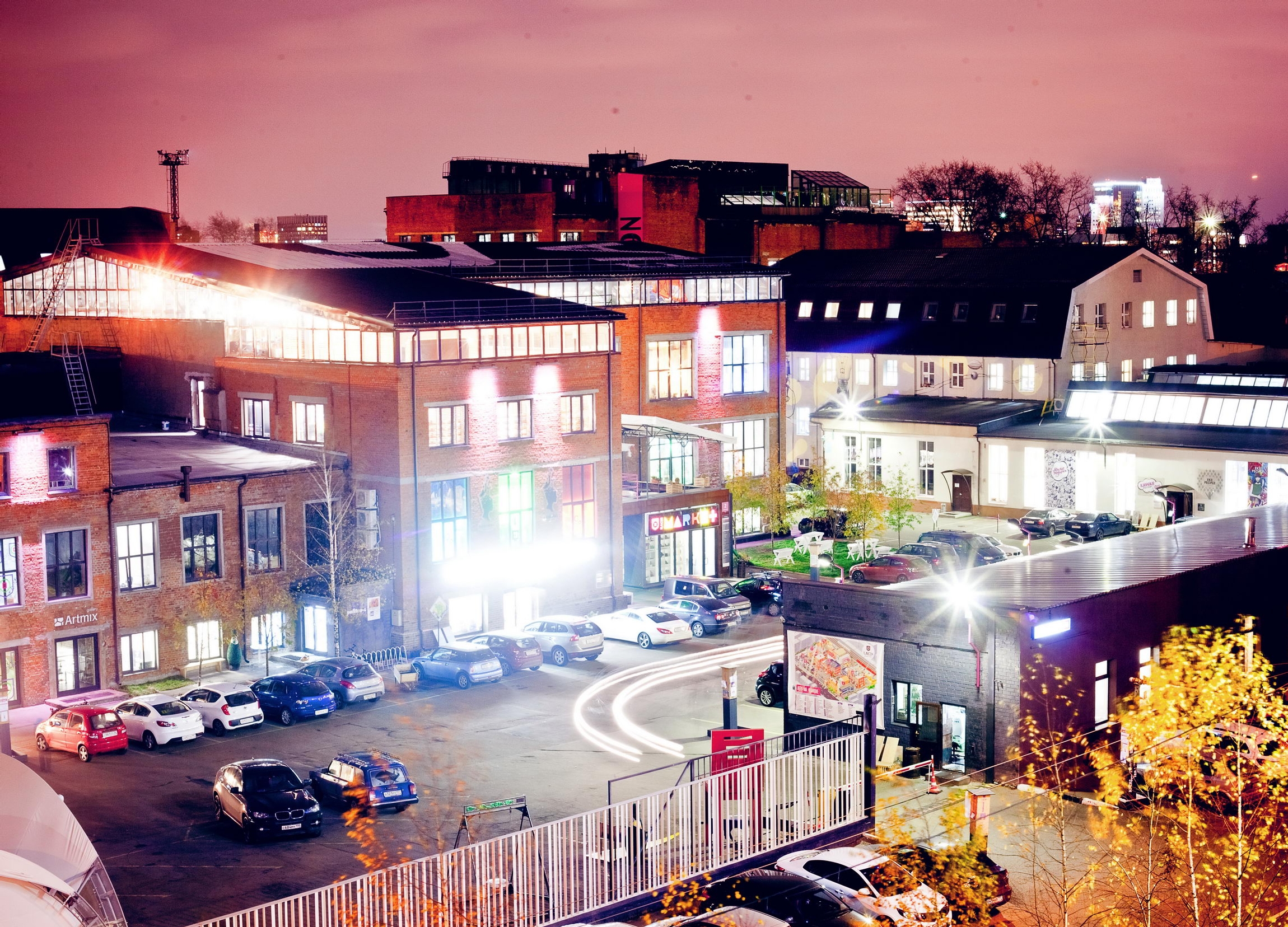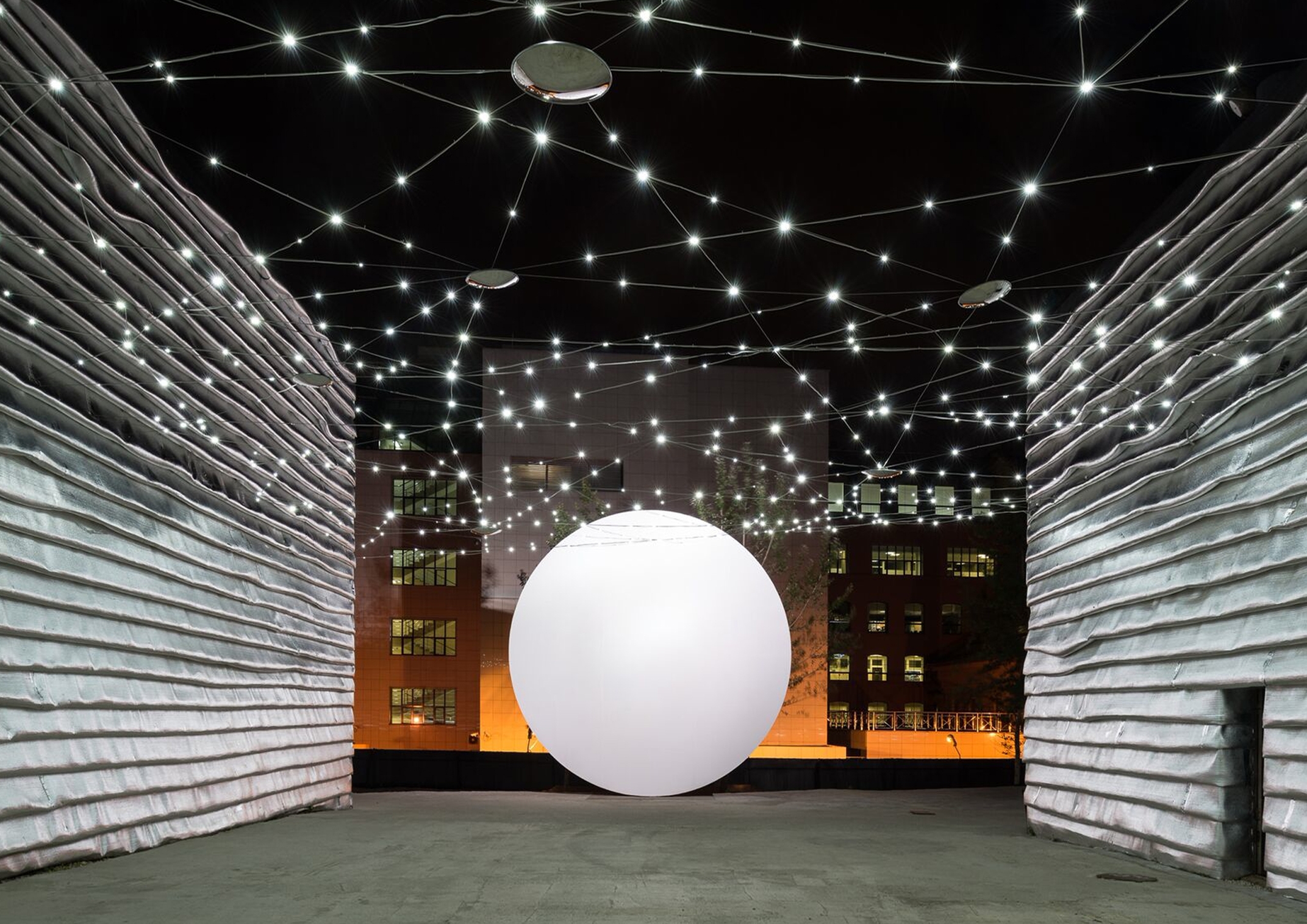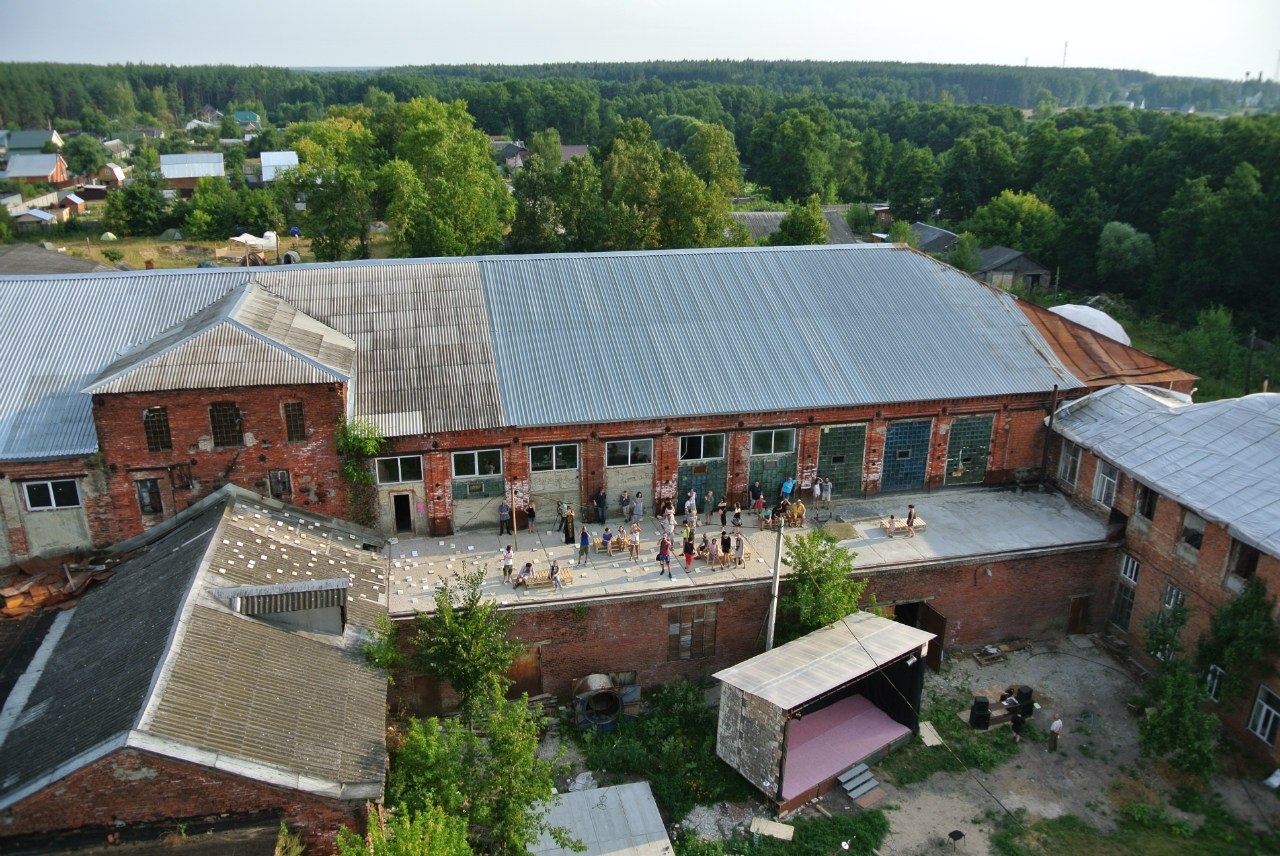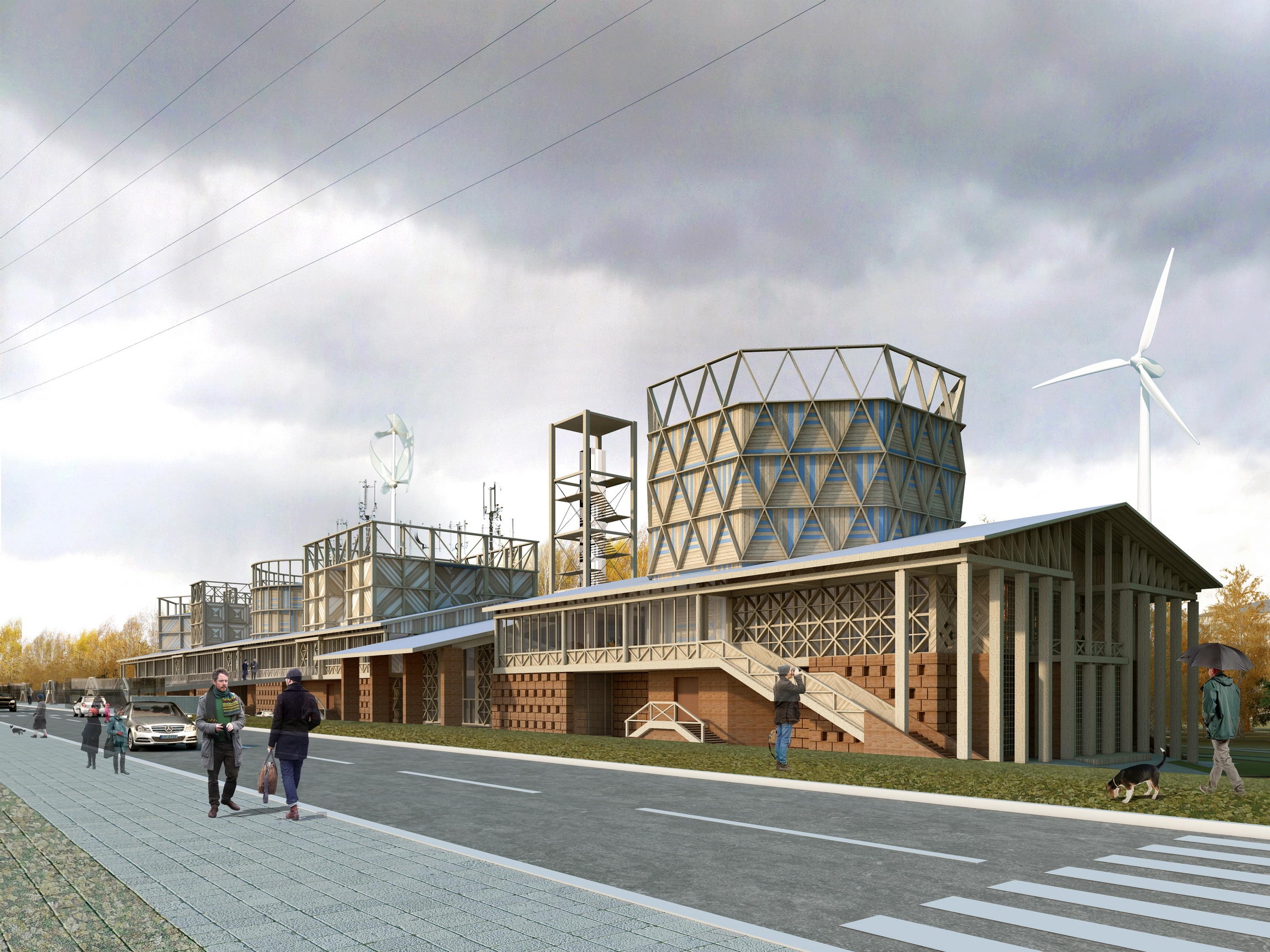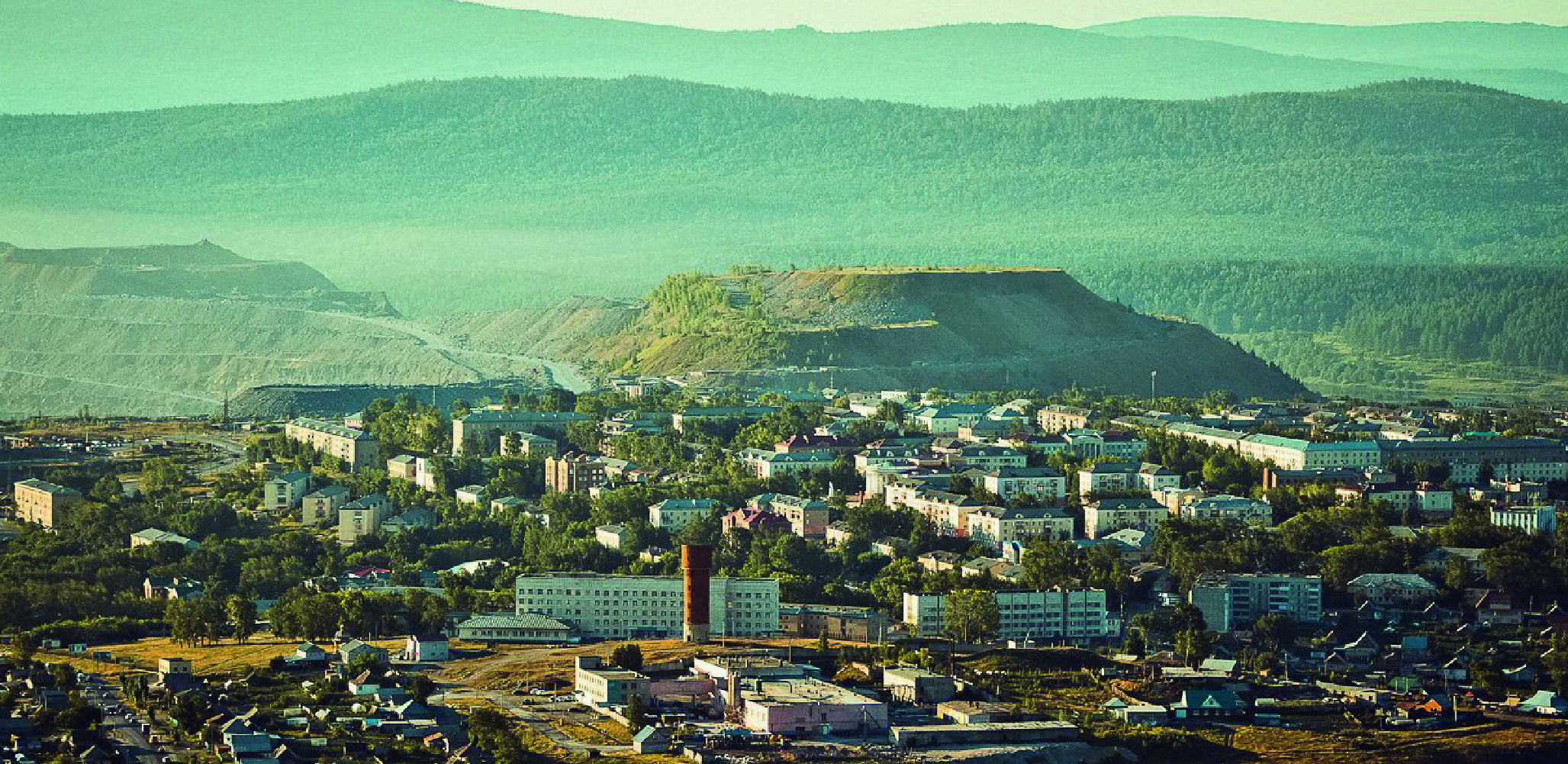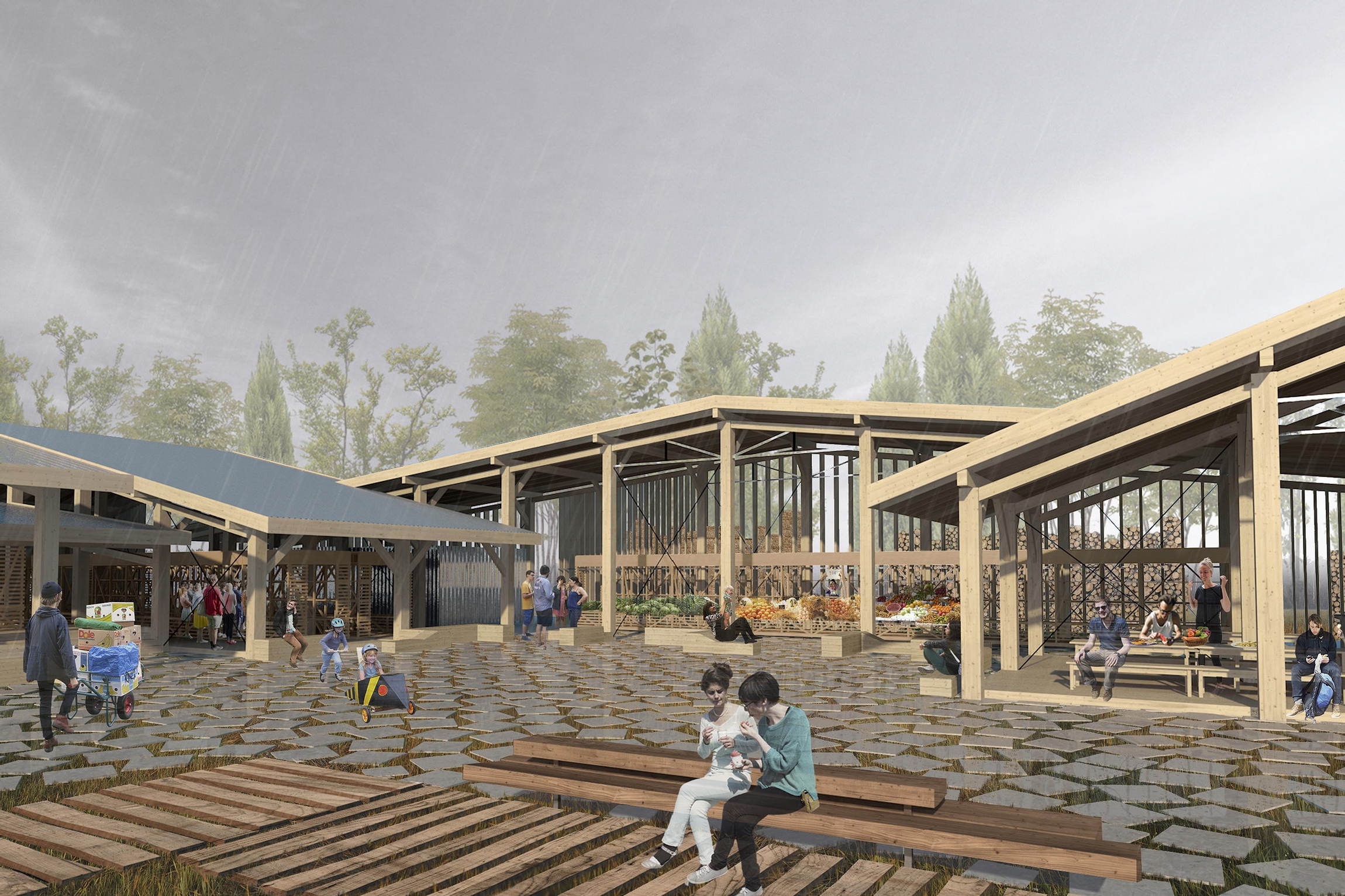Archi.ru:
- The first question that I would like to ask is both from us and our readers. The range of "new industries" that will be discussed at "Zodchestvo - 2015" is very broad indeed - it includes virtually all fields of human endeavor, not only urban but rural as well: agricultural industry is also represented. So it turns out that for today's Russia practically any industry, for the exception of the mining industry and the development industry are new, progressive, and worth supporting.
Andrew and Nikita Asadov:
- For the expo project of "Zodchestvo", this year we are trying to select everything that, at least from our standpoint, pushes forward the city's business activity without which it simply cannot exist. Today, the main problem - if we are to consider the nation's architecture as a whole - lies in the fact that active people from the regions have a tendency of first moving to the regional centers, then to one of the capitals, and then, if they are lucky, to the western countries. And one of the goals of the festival is to try and start the reverse process - as a matter of fact, it has already started, but without involving the people so far - I am speaking here about the minor cities turning into places that are attractive to live in thanks to, among other things, those "new industries". With their help, these cities get business activity of a whole new level because there is now a whole class of people that are tired of doing things in Moscow that can be actually done in a minor city but in conditions that are more comfortable. Both for these cities and for this country in general, this will be a salvation in many ways because it will launch a totally different mechanism of development, while architecture will be the ignition, the tool to start this mechanism.
This new industry is a means of attracting people to the new cities, while their architecture is a tool of making the people stay there to create a "new quality of life" because now the whole production process is not so much about the quantity as it is about the quality and about creating a new format that is creative, highly technological and highly intellectual. Another consideration why this theme is vital: today, because of the world economic crisis, the former sources of getting rich quick have virtually disappeared; new technologies of getting rich slowly but surely are starting to come into play. We view this situation as a chance for starting new industries, a chance to popularize and speed up this process.
By this "new industries" term we mean the whole spectrum of intellectual and creative activities. The future belongs to them. And just how soon Russia will switch over to this "new economy" will determine how soon it will be able to reinvent itself, including its culture and society. Actually, if as early as now the architects start thinking about how to readjust the existing city and rural spaces to this "new economy", then architecture can become one of the flagships of this transformation process. The fact that this process must begin in the upcoming year is already clear. And we propose to do this with the help of architecture.
Andrew and Nikita Asadov. Photo courtesy by "Zodchestvo" Festival organizing committee
"Vinzavod"in Moscow. Photo courtesy by "Zodchestvo" Festival organizing committee
Design-factory "Flacon" in Moscow. Photo courtesy by "Zodchestvo" Festival organizing committee
- However, your list includes not only science and culture but also the service industry, the tourism industry, and even transportation.
- This all hits one and the same mark. These new industries are like "points of growth" for the Russian cities. What do you need to make such "point of growth" work in a city? You need to form a space for this effective growth at the same time renovating what you already have. With this purpose in mind, you can "re-format" the derelict factory buildings that are there of virtually any mid-size to small Russian city, "re-format" their both space and restart the production process - only make it creative, informative, and intellectual. Still further on, to make this city, working on "new production", attractive for the young specialists, you need to improve the quality of live there and create an environment comfortable to live in. And in order to do that, you need to renew and reform the public territories or create them from scratch. The tourism industry will also work for the same cause: if the city lacks a suitable factory building but has a great monument of architecture, a Kremlin or even a monastery - it can also become a "point of growth".
- A monastery as a museum or as a cult building handed over to the Orthodox Church?
- The monasteries that were handed back over to the Church are alright; they have become cultural clusters in their own right - and we have numerous examples of that. They form around them a community and do something that so far the post soviet municipal authorities have been unable to do: in the case of the monasteries, we have a strong spiritual power, thanks to which all the system start to work easier and more naturally.
As far as the transportation is concerned, in order to make the locomotion in such a "network" space of cities faster - because even if everyone is always online you have to pay offline visits to your friends and colleagues now and then - we will need the adequate transportation systems - fast and convenient, starting from the renovation of the highways and ending with alternative kinds of transport, including the hi-speed string transport systems.
Art-territory EMA (former factory of electrical medical appliances) in Moscow. Photo © Yuri Palmin. Photo courtesy by "Zodchestvo" Festival organizing committee
Model Cluster © Megabudka. Photo courtesy by "Zodchestvo" Festival organizing committee
- The manifesto of the festival makes stress on the "human capital". On the one hand, Russia has enough of it but, on the other hand, one cannot help but notice the deficit of this capital: this refers, for example, to the circle of your co-organizers of architectural events - exhibitions and festivals - because it is relatively small. This observation holds true for other fields of activity as well. The truly active people, people who think out of the box and people that are ready to break the viscous circle of "home-studies-work-family" still seem to be few and far between.
- Well, according to our feelings, recently the Russian architectural community has been getting a whole lot more "proactive" projects. This, on the one hand, has to do with the growing popularity of urbanism and architecture-related movements. And the architects themselves have started to act as activists and "instigators" of renovating the city territories. Here is a living example of such initiative - the Environment Department, launched by the team of young architects "Megabudka". What they do is they come up with a project online, discuss it online and then go and implement it in their city. And we know a whole number of such initiatives.
"Crystal" factory © Nowadays Bureau. Photo courtesy by "Zodchestvo" Festival organizing committee
Creative estate "Art-Guslitsa". Photo courtesy by "Zodchestvo" Festival organizing committee
- So, the main exposition of "Zodchestvo" will be showcasing the "new industries". What special projects will be augmenting it?
- Yes, the main place at the exhibition will be occupied by the real examples of architectural renovation of the city territories and separate buildings. It must be mentioned here that the lineup of the participants will be changing in the course of the expo tour of Russia that is scheduled to take place after the festival - the projects that we have now will be added by the local examples.
Another special project - "Anatomy of the City" by Ilia Zalivukhin - will show the city as a living and breathing organism with its own skeleton, nervous and blood-vascular system.
Traditionally, there will also be an educational special project that gathers the best architectural schools of Russia. It is prepared by Oscar Mamleev and MARCH School in the person of its leaders Eugene Ace and Nikita Tokarev.
We are also planning a project of unusual "non-verbal" format. This is our joint project with the so-called "Forum of Living Cities". We will put up a large poster with the principles of the Charter of Living Cities proposed by different experts, and any Zodchestvo visitor will be able to add his or her five principles. "Forum of Living Cities" is an initiative that's coming from the city of Izhevsk, proposed by Leo Gordon and his colleagues. At the example of their home city they showed that with the help of active people the city can come alive again, muster its hidden resources and transform its inner space. And this initiative is already spreading across the nation.
Museum of Science and Technology in Tomsk © «Studio 44».Photo courtesy by "Zodchestvo" Festival organizing committee
Eco-park "Yasno Pole" © «8 lines» Bureau. Photo courtesy by "Zodchestvo" Festival organizing committee
- In your interviews, you often say that "Zodchestvo" must be the PR platform to promote architecture in general. But this is the problem of any architectural exhibition - including Venetian Biennale - in essence, they are held for the intimate circle of colleagues and friends, which is certainly the case with "Zodchestvo", just as with "Arch-Moscow". How do we go about attracting more general public?
- In our opinion, one should start with a "non-architectural" theme. This "new industries" theme was devised in the first place in order to attract not only the architects but also the participants and the creators of the new industries, the creative class, and the city activists. Incidentally, to participate in the main exhibition we invited both architects and leaders of different creative projects and venues, and they all on equal terms are doing the models for this exposition which is also very interesting.
At the same time we want to demonstrate that the architects are experts who do a lot of systematic and integrated thinking, who can reconcile the interest of all the participants of the process.
Stereo-Satka © «MARCH lab». Photo courtesy by "Zodchestvo" Festival organizing committee
Mid-Volga subsidiary of GCSI in the building of a communal kitchen in Samara. Photo courtesy by "Zodchestvo" Festival organizing committee
- So, where does the boundary of the architect's responsibility lie?
- This is a whole new topic, also very important. In this country, architects are oftentimes perceived as mere "facade designers" of the ready-made volumes predetermined by the town-planning rules and regulations. What we demonstrate, however, is that an architect intrinsically has the potential of an "orchestra conductor", that he is somebody who organizes the city space and comes up with the strategy of its renovation. He is the author of the script upon which the whole concept of implementing the new industries must be launched - up to the fact that he can write a scenario of renovating a whole city. An architect is just like a doctor - he feels what spots must be pressed, which specific places must be renewed to make the city come alive - even within the limits of a very tight budget.
The architect keeps in mind the interests of all the participants of the process: the municipality of the city, the city people, the investors, the developers and whatnot. And, considering these interests, he creates a product that's beneficial for the entire city. This synthetic quality of architectural thinking can be the salvation specifically today when we need to come up with integrated strategies.
We have a feeling that this beginning process of "re-formatting" the minor cities may really be new for a lot of people, and this is why most people have a very vague idea of how to go about it. What do you need to do with the city territory to make it "restart" again - not some separate building or public area but the entire urban mechanism? The architects have a chance of initiating this process and showing that they are capable of a lot more that what they've been doing for the last twenty years.
Farm fair in the Tula Region © «8 lines». Photo courtesy by "Zodchestvo" Festival organizing committee
- Your exposition will be situated next to the showcase of the nation's projects already traditional for "Zodchestvo". How do these two parts go together in your concept?
- Apart from our reasoning, one must understand the reality that we live in. And it is "Zodchestvo" that gives the necessary picture of the world. "Zodchestvo" is not about showcasing the most prestigious Moscow projects - it is about showcasing what "average" architecture in this country is all about. This "kills" any false pretenses possible. We have no illusions - we do realize that today our country is functioning in such conditions, with such consumers, and in such reality. This is very important because you always need to realize just what reality you are in, what context is that you need to consider, and this context, by the way, will not accept any super-radical changes, it will simply reject them.
There is this particular context but there is also the theme of this year. All of us - the curators, the expert board, and the festival on the whole - we are proposing a vector of development - what kind of future we see behind the reality of today - and propose to act and think in this direction in spite of any obstacles.

